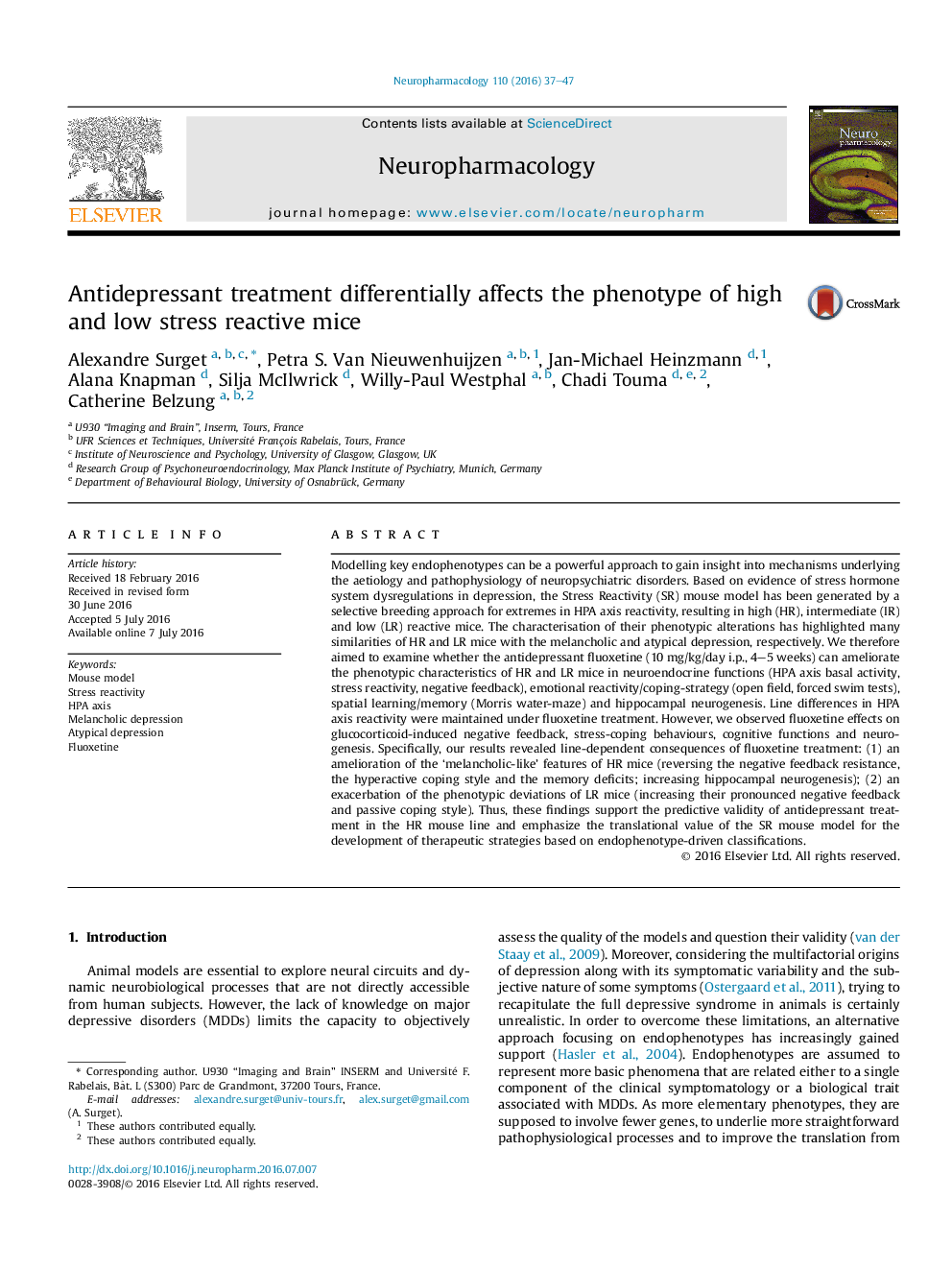| Article ID | Journal | Published Year | Pages | File Type |
|---|---|---|---|---|
| 5549205 | Neuropharmacology | 2016 | 11 Pages |
â¢Fluoxetine altered HPA axis functions and stress coping behaviour in the SR mouse lines.â¢Fluoxetine improved memory deficits and neurogenesis in HR mice.â¢The “melancholic-like” profile of HR mice was ameliorated by fluoxetine.â¢The phenotypic deviations of LR mice were exacerbated by fluoxetine treatment.
Modelling key endophenotypes can be a powerful approach to gain insight into mechanisms underlying the aetiology and pathophysiology of neuropsychiatric disorders. Based on evidence of stress hormone system dysregulations in depression, the Stress Reactivity (SR) mouse model has been generated by a selective breeding approach for extremes in HPA axis reactivity, resulting in high (HR), intermediate (IR) and low (LR) reactive mice. The characterisation of their phenotypic alterations has highlighted many similarities of HR and LR mice with the melancholic and atypical depression, respectively. We therefore aimed to examine whether the antidepressant fluoxetine (10Â mg/kg/day i.p., 4-5 weeks) can ameliorate the phenotypic characteristics of HR and LR mice in neuroendocrine functions (HPA axis basal activity, stress reactivity, negative feedback), emotional reactivity/coping-strategy (open field, forced swim tests), spatial learning/memory (Morris water-maze) and hippocampal neurogenesis. Line differences in HPA axis reactivity were maintained under fluoxetine treatment. However, we observed fluoxetine effects on glucocorticoid-induced negative feedback, stress-coping behaviours, cognitive functions and neurogenesis. Specifically, our results revealed line-dependent consequences of fluoxetine treatment: (1) an amelioration of the 'melancholic-like' features of HR mice (reversing the negative feedback resistance, the hyperactive coping style and the memory deficits; increasing hippocampal neurogenesis); (2) an exacerbation of the phenotypic deviations of LR mice (increasing their pronounced negative feedback and passive coping style). Thus, these findings support the predictive validity of antidepressant treatment in the HR mouse line and emphasize the translational value of the SR mouse model for the development of therapeutic strategies based on endophenotype-driven classifications.
